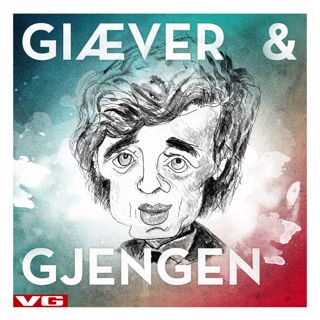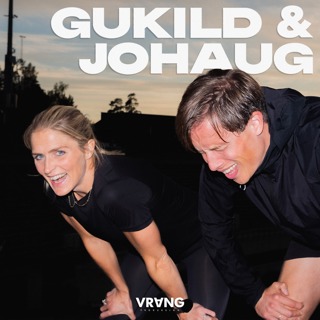
The OIG Report Into Jeffrey Epstein's Non Prosecution Agreement (Part 25-26) (11/1/25)
The Jeffrey Epstein non-prosecution agreement (NPA) of 2007-08, reviewed by the U.S. Department of Justice’s Office of Professional Responsibility (OPR), detailed how federal prosecutors in the U.S. Attorney’s Office for the Southern District of Florida negotiated a deal that effectively ended an active federal investigation into Epstein’s alleged trafficking and abuse of underage girls. The agreement granted broad immunity to Epstein and unnamed “potential co-conspirators,” allowed him to plead guilty to state charges instead of facing major federal sex-trafficking counts, and did so without informing or consulting the victims before the deal was executed. The OPR found that while no evidence of corruption or impermissible influence was uncovered, the decision represented “poor judgment” by the prosecutors.Further, the report underscored significant procedural deficiencies: victims were not made aware of the NPA, the USAO did not meaningfully engage with them in accordance with the Crime Victims’ Rights Act’s principles, and the immunity granted in the NPA curtailed future federal prosecution of Epstein’s associates—even as investigation into other victims and broader criminal conduct may have persisted. In short, the OPR concluded that the case resolution was legally within the prosecutors’ discretion, but deeply flawed in its execution and fairness to those harmed.to contact me:bobbycapucci@protonmail.comsource:dl (justice.gov)Become a supporter of this podcast: https://www.spreaker.com/podcast/the-epstein-chronicles--5003294/support.
1 Nov 21min

The OIG Report Into Jeffrey Epstein's Non Prosecution Agreement (Part 23-24) (11/1/25)
The Jeffrey Epstein non-prosecution agreement (NPA) of 2007-08, reviewed by the U.S. Department of Justice’s Office of Professional Responsibility (OPR), detailed how federal prosecutors in the U.S. Attorney’s Office for the Southern District of Florida negotiated a deal that effectively ended an active federal investigation into Epstein’s alleged trafficking and abuse of underage girls. The agreement granted broad immunity to Epstein and unnamed “potential co-conspirators,” allowed him to plead guilty to state charges instead of facing major federal sex-trafficking counts, and did so without informing or consulting the victims before the deal was executed. The OPR found that while no evidence of corruption or impermissible influence was uncovered, the decision represented “poor judgment” by the prosecutors.Further, the report underscored significant procedural deficiencies: victims were not made aware of the NPA, the USAO did not meaningfully engage with them in accordance with the Crime Victims’ Rights Act’s principles, and the immunity granted in the NPA curtailed future federal prosecution of Epstein’s associates—even as investigation into other victims and broader criminal conduct may have persisted. In short, the OPR concluded that the case resolution was legally within the prosecutors’ discretion, but deeply flawed in its execution and fairness to those harmed.to contact me:bobbycapucci@protonmail.comsource:dl (justice.gov)Become a supporter of this podcast: https://www.spreaker.com/podcast/the-epstein-chronicles--5003294/support.
1 Nov 28min

The OIG Report Into Jeffrey Epstein's Non Prosecution Agreement (Part 21-22) (11/1/25)
The Jeffrey Epstein non-prosecution agreement (NPA) of 2007-08, reviewed by the U.S. Department of Justice’s Office of Professional Responsibility (OPR), detailed how federal prosecutors in the U.S. Attorney’s Office for the Southern District of Florida negotiated a deal that effectively ended an active federal investigation into Epstein’s alleged trafficking and abuse of underage girls. The agreement granted broad immunity to Epstein and unnamed “potential co-conspirators,” allowed him to plead guilty to state charges instead of facing major federal sex-trafficking counts, and did so without informing or consulting the victims before the deal was executed. The OPR found that while no evidence of corruption or impermissible influence was uncovered, the decision represented “poor judgment” by the prosecutors.Further, the report underscored significant procedural deficiencies: victims were not made aware of the NPA, the USAO did not meaningfully engage with them in accordance with the Crime Victims’ Rights Act’s principles, and the immunity granted in the NPA curtailed future federal prosecution of Epstein’s associates—even as investigation into other victims and broader criminal conduct may have persisted. In short, the OPR concluded that the case resolution was legally within the prosecutors’ discretion, but deeply flawed in its execution and fairness to those harmed.to contact me:bobbycapucci@protonmail.comsource:dl (justice.gov)Become a supporter of this podcast: https://www.spreaker.com/podcast/the-epstein-chronicles--5003294/support.
1 Nov 23min

The OIG Report Into Jeffrey Epstein's Non Prosecution Agreement (Part 19-20) (10/31/25)
The Jeffrey Epstein non-prosecution agreement (NPA) of 2007-08, reviewed by the U.S. Department of Justice’s Office of Professional Responsibility (OPR), detailed how federal prosecutors in the U.S. Attorney’s Office for the Southern District of Florida negotiated a deal that effectively ended an active federal investigation into Epstein’s alleged trafficking and abuse of underage girls. The agreement granted broad immunity to Epstein and unnamed “potential co-conspirators,” allowed him to plead guilty to state charges instead of facing major federal sex-trafficking counts, and did so without informing or consulting the victims before the deal was executed. The OPR found that while no evidence of corruption or impermissible influence was uncovered, the decision represented “poor judgment” by the prosecutors.Further, the report underscored significant procedural deficiencies: victims were not made aware of the NPA, the USAO did not meaningfully engage with them in accordance with the Crime Victims’ Rights Act’s principles, and the immunity granted in the NPA curtailed future federal prosecution of Epstein’s associates—even as investigation into other victims and broader criminal conduct may have persisted. In short, the OPR concluded that the case resolution was legally within the prosecutors’ discretion, but deeply flawed in its execution and fairness to those harmed.to contact me:bobbycapucci@protonmail.comsource:dl (justice.gov)Become a supporter of this podcast: https://www.spreaker.com/podcast/the-epstein-chronicles--5003294/support.
1 Nov 27min

DOJ Brass And The Final Green Light To Go Ahead With The Epstein NPA
When the 2007 Non-Prosecution Agreement that saved Jeffrey Epstein’s skin was finalized, it wasn’t just some rogue local U.S. Attorney acting on his own. The top brass at the Department of Justice — including then–Deputy Attorney General Mark Filip and Attorney General Michael Mukasey — were in the loop. Internal communications, later cited in court filings and investigative reports, show that the NPA was vetted and approved at Main Justice in Washington. Filip’s signature appears on the final authorization, effectively green-lighting one of the most scandalous sweetheart deals in modern American legal history. That deal guaranteed Epstein would avoid federal prosecution, granted immunity to unnamed “co-conspirators,” and allowed him to serve just 13 months in a county jail with daily “work release.” It wasn’t a clerical accident — it was deliberate, systematic protection signed off by DOJ leadership.The reality is that Epstein’s NPA wasn’t just a Florida fluke — it was federal complicity dressed in legal procedure. Mukasey, who was Attorney General at the time, oversaw a DOJ that not only tolerated the deal but later defended it in court, arguing it was “binding and final.” Filip’s direct approval made the arrangement bulletproof against internal reversal. This wasn’t a failure of oversight — it was coordination. The DOJ could have overruled Acosta at any time but instead ratified his actions, cementing a cover-up that shielded Epstein’s entire network. The real story of the NPA is that it wasn’t just signed in Miami — it was sanctified in Washington.to contact me:bobbycapucci@protonmail.comBecome a supporter of this podcast: https://www.spreaker.com/podcast/the-epstein-chronicles--5003294/support.
1 Nov 16min

Jeffrey Epstein And The High End Restaurant Adventures
Jeffrey Epstein used fine dining not just for pleasure, but as a weapon of influence. His presence in elite restaurants like Le Cirque, Nobu, and Cipriani wasn’t about the food — it was about power. These venues served as neutral ground where billionaires, academics, and politicians could meet under the guise of sophistication. Epstein was known to host private dinners with figures such as Tim Zagat, the co-founder of Zagat Guide, and other Manhattan socialites years after his sex-offender conviction. At these tables, deals were discussed, introductions were made, and reputations were rehabilitated. To the outside world, it looked like civility and charm; in reality, it was grooming at scale — the construction of credibility through proximity. Every dinner, every photo, every handshake was another layer of legitimacy wrapped in luxury linen.The restaurant world also quietly enabled his image. Owners of trendy Hamptons and Manhattan establishments seated him like any other VIP, despite his notoriety. The owner of 75 Main in Southampton later admitted Epstein had a standing reservation — a table that was literally burned after his crimes were exposed. Behind the scenes, his private chef, Adam Perry Lang — a celebrated restaurateur connected to Hollywood’s elite — cooked for Epstein’s guests at both his Manhattan townhouse and his private island. These culinary connections weren’t incidental; they were part of the camouflage. Fine dining gave Epstein access, privacy, and respectability. In the world of five-star meals and champagne toasts, he wasn’t a predator — he was just another “important man.” And that’s exactly how he kept his network alive.to contact me:bobbycapucci@protonmail.comBecome a supporter of this podcast: https://www.spreaker.com/podcast/the-epstein-chronicles--5003294/support.
1 Nov 10min

Jeffrey Epstein And The Secrets Hidden Inside Of The Files
The Epstein files — spanning court documents, flight manifests, sealed depositions, and seized evidence — contain not only what’s known, but what’s still deliberately obscured. When fragments were unsealed, the public saw pieces of Epstein’s world: flight logs filled with powerful names, a contact book crammed with global elites, and correspondence hinting at financial favors and introductions. These records outlined how Epstein cultivated influence, recruiting scientists, politicians, and billionaires under the guise of philanthropy or investment. The documents also revealed extensive coordination with Ghislaine Maxwell and a network of assistants who managed everything from travel to victim “recruitment.” But what’s been released is a fraction of the full archive. The FBI seized hard drives, private servers, and thousands of photos and videos from Epstein’s homes — much of which remains under federal seal. The House Oversight Committee recently confirmed that many of the “newly released” Epstein files were re-publications of older material, suggesting that the real trove — the one with sensitive communications, intelligence ties, and client transactions — still hasn’t seen daylight.What makes the Epstein files so haunting isn’t just what they show, but what they don’t. The Department of Justice admitted there is no “client list,” but that doesn’t explain the withheld grand jury transcripts, sealed financial ledgers, and redacted witness statements. Judges have cited “privacy” and “national security” as reasons for keeping major portions locked away, raising suspicions that the protection isn’t for victims — it’s for power. Some documents reportedly reference individuals tied to major institutions, global banks, and intelligence circles, yet those names remain buried. Even with the unsealings, journalists and survivors describe the disclosures as “an illusion of transparency” — enough to quiet demands for accountability but not enough to expose the machinery that protected Epstein for decades. The secrets buried in those files likely define why he was untouchable in life, and why even in death, the system still shields the people who made him possible.to contact me:bobbycapucci@protonmail.comBecome a supporter of this podcast: https://www.spreaker.com/podcast/the-epstein-chronicles--5003294/support.
31 Okt 27min

Jeffrey Epstein And The Carefully Constructed Infrastructure He Built Around Him
Jeffrey Epstein didn’t just commit crimes — he engineered a system built to enable them. He created an infrastructure that blended wealth, real estate, aviation, and power into a self-sustaining operation of exploitation. His vast network of properties — from the Manhattan mansion wired with hidden cameras to the Zorro Ranch in New Mexico and the private islands of Little Saint James and Great Saint James in the U.S. Virgin Islands — served as hubs for trafficking, coercion, and control. His fleet of private aircraft, including the infamous Boeing 727 nicknamed the Lolita Express, allowed him to move victims and powerful associates across jurisdictions under the guise of philanthropy or business. Beneath it all was a web of shell companies, offshore trusts, and foundations such as the Jeffrey Epstein VI Foundation, which he used to launder reputation, attract scientists, and fund elite academic programs that bought him credibility and access. Every element of his life was deliberately structured to make his crimes invisible and his victims disposable.But the most disturbing part of Epstein’s infrastructure was human, not material. His “assistants,” “recruiters,” and legal fixers formed an ecosystem that blurred the lines between employee and accomplice. Some were former victims turned groomers; others were accountants, lawyers, and estate managers who ensured money flowed smoothly while scrutiny was diverted. Epstein’s connections with elite universities, financiers, royals, and politicians gave him protection that few criminals could dream of — a shield built out of favors, influence, and blackmail potential. His empire ran like a corporation of abuse, complete with logistics, finance, HR, and crisis management. Long after his death, the remnants of that infrastructure — from sealed documents to estate managers still under investigation — show that Epstein’s power didn’t end with him. It was a system by design, not accident — a case study in how money and manipulation can industrialize human exploitation.to contact me:bobbycapucci@protonmail.comBecome a supporter of this podcast: https://www.spreaker.com/podcast/the-epstein-chronicles--5003294/support.
31 Okt 17min





















